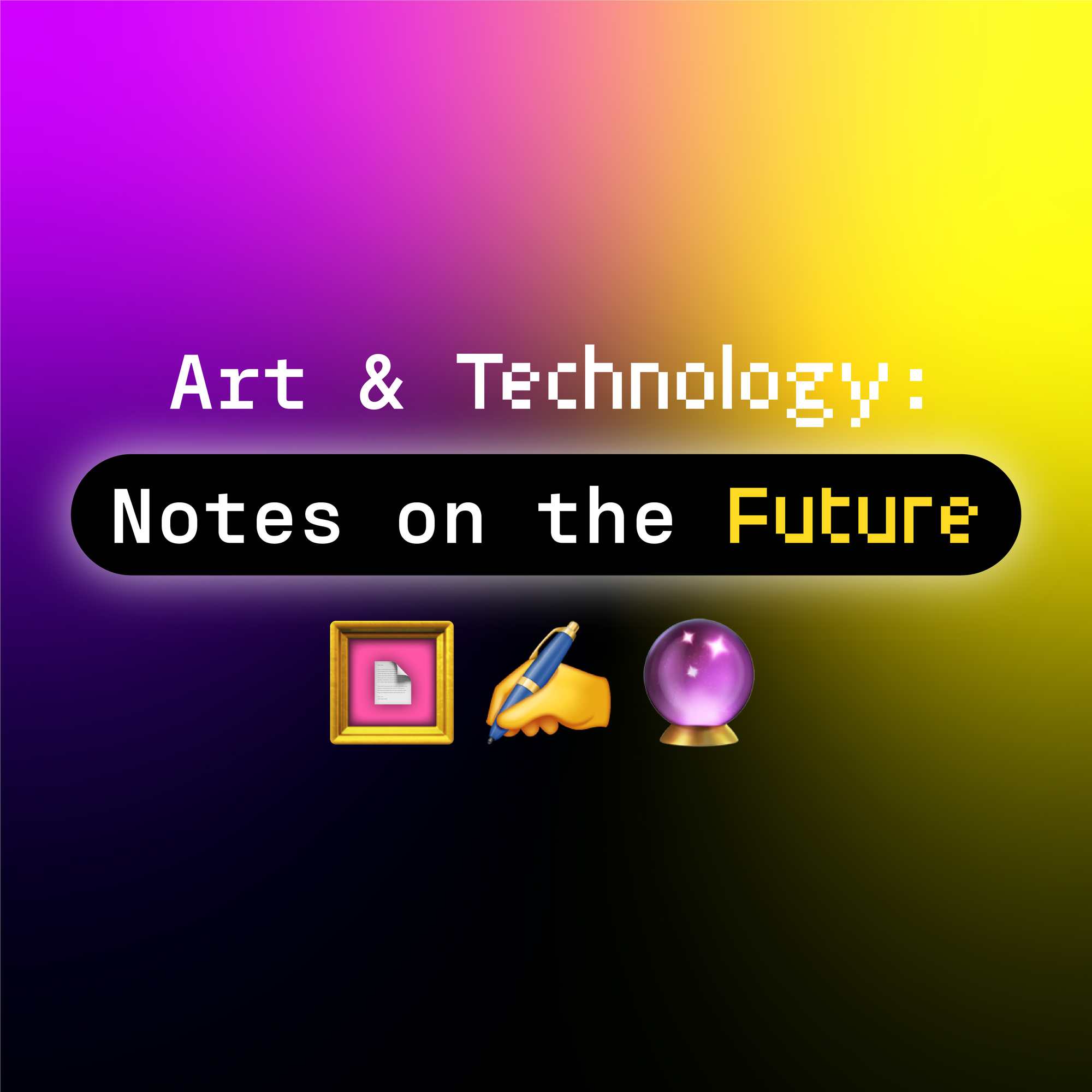Art and Technology: Notes on the Future
By Terrain.art | Oct 5 2021 · 6 min read
From digital art to online marketplace, technology is profoundly shaping the way contemporary art is understood and consumed.
Art and technology may seem to be disconnected at first, but in the history of art, technology has always provided artists with new ways to express themselves. After all, how life-like would Da Vinci’s drawings and sculptures be had the study of human anatomy not become popular in the Renaissance period? How would the Impressionists have painted memorable landscapes had portable paint tubes, which enabled them to paint outdoors, not been invented? Finally, where would Andy Warhol’s Pop Art be without silk screen printing?
Digital technology has not only changed the way artists express themselves but also how contemporary art is perceived and consumed. Digital tools and technology have made art accessible to broad audiences while social media platforms have made people more engaged in art. Art-related online platforms have brought to the fore unknown artists. The new discipline of technology-based art uses AI and robotics in a motley of endeavours — from writing poems to creating artworks. Big data and algorithms now play an important role in determining the value of art, and non-fungible tokens promise to do away with the problem of counterfeiting, which has long plagued the art world.
Here’s a look at how art and technology are getting intertwined in new and interesting ways:
The Dawn of the Online Marketplace
While e-commerce sites have been around for a while, they have been slower to take hold in the contemporary art world. The art market is a complex web of dealers, collectors, and galleries that can be daunting for both the artist as well as the art appreciator. For a young artist, it can be difficult to enter what appears to be a tightly knit world and for many would-be art enthusiasts, galleries and exhibitions have always been out of their reach. However, the online marketplace has indeed begun to democratize the field.
According to Statista, the total art market value fell by USD 14 billion in 2020. However, sales in the online art market doubled in the same period, reaching over USD 12 billion. Several online retailers provide attractive terms of service, profit margins, and overall experience for artists while offering a seamless navigational experience for buyers. Many of these online retailers are open and transparent about their curatorial standards, making the entire process of buying and selling art secure and hassle-free.
A few online retailers that deserve mention include Saatchi Art (one of the biggest players that offer more than 500,000 original artworks by over 60,000 artists), Artfinder (which uses AI to provide a personalized shopping experience for those who can shell out more than USD 500), and Absolut Art (which enables artists to produce original and limited edition artworks that are framed, signed, and delivered straight to consumers’ doorsteps).
Closer home, Terrain.art has a thriving online community that enables young artists to showcase their art, while giving buyers invaluable tips on building their own digital art collection.
Virtual Tours
If you have had enough of Netflix and chill, then brushing up on your art knowledge may be just the thing for you this pandemic season. Google Art & Culture has teamed up with over 2,500 museums and art galleries globally to bring you virtual tours of their exhibits. Some of the major ones include the Van Gogh Museum (Amsterdam), Guggenheim Museum (New York) and National Gallery of Art (Washington D.C.). While originals are out of reach for most of us, art lovers can admire paintings, sculptures, and installations from the comfort of their own home sans the serpentine queues and steep ticket prices. From interactive 360-degree videos to full walk-around tours complete with voiceovers and zoom-in options, there are a host of ways through which real people can now connect with art more than ever before.
Putting NFTs in Context
Perhaps, the most interesting way in which art and technology has come together is in the field of NFT that has seen numerous lesser-known artists earn millions by directly reaching out to their buyers.
Digital artist Mike Winkelmann, better known as Beeple, made history in March with his digital collage Everydays: The First 5,000 Days, sold at Christie’s as a non-fungible token (NFT) that guaranteed its authenticity.
In a statement, Beeple said, “Artists have been using hardware and software to create artwork and distribute it on the internet for the last 20+ years but there was never a real way to truly own and collect it. With NFTs that has now changed. I believe we are witnessing the beginning of the next chapter in art history, digital art.”
Given the excitement around NFTs, Beeple’s claim doesn’t seem far-fetched. These digital tokens have the potential of altering how art is bought and sold as they help in maintaining a digital record of transactions through tamper-proof blockchain technology.
Since NFTs are by nature unique, artists and collectors are protected from counterfeiting and unauthorized replicas. NFTs not only provide authenticity but also create scarcity, which helps in driving value. The original creator of a work of art can also set up terms that would enable him or her to claim a share upon each resale, which is a revolutionary benefit for artists.
But areas of concern remain. Since transactions are conducted online, anyone can claim to be the creator of a relatively unknown piece of art. Others say that it is nothing more than a digital bubble that may not stand the test of time. But with the ilk of Jack Dorsey putting up his first-ever tweet for auction and the Associated Press offering a digital depiction of the US electoral college map from space for sale, the sky may be the limit for NFTs, at least for now.

